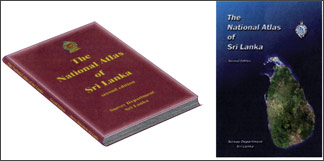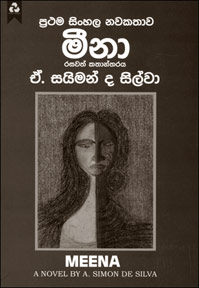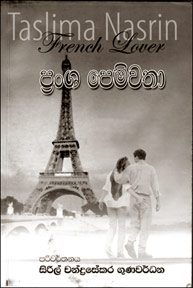|

An overview of the 2nd edition of National Atlas
By B. J. P. Mendis, Surveyor General,
 The Survey Department of Sri Lanka which functions under the Ministry
of Lands and Land Development is proud to launch the second edition of
the National Atlas, since its first publication in 1988 and thereby
marking yet another milestone in its long history of 208 years. The Survey Department of Sri Lanka which functions under the Ministry
of Lands and Land Development is proud to launch the second edition of
the National Atlas, since its first publication in 1988 and thereby
marking yet another milestone in its long history of 208 years.
The first copy was presented to President Mahinda Rajapaksa at a
ceremony on July 16 at the Temple Trees.
It is important milestone for many reasons. During the past two
decades, the country has undergone significant social and economic
changes which have had an impact on the physical, social and economic
conditions of the nation.
Remarkable changes have taken place in the fields of Agriculture,
Demography, Transport, Industry, Commerce, Administration and
Infrastructure Development.
Two unfortunate events, namely the civil unrest in some parts of the
country and the unprecedented impact of the tsunami of 2004 too have
contributed to the changes in the socio-economic scenario.
In view of the above, and the availability of more recent data from
the Census of Population of 2001 and numerous other surveys conducted
since the publication of the first edition of the National Atlas, the
Survey Department embarked on this challenging task of producing a more
detailed and comprehensive publication.
Thus the Department took immediate steps to establish an Editorial
Board under the chairmanship of the then Surveyor General, Ranasinghe
Silva.
The editorial board consisted of eminent persons with considerable
experience and expertise in their respective fields drawn from the
National Universities and Government Departments. The immediate task of
the editorial board was the selection of themes that are relevant to a
National Atlas.
The next task was the identification of local experts to write the
required articles according to the agreed design and contents. To
facilitate the work of the Atlas, the Survey Department set up an Atlas
Unit which was responsible for the production of the Atlas. As Chairman
of the Editorial Board, the Surveyor General had to play a pivotal role
in the entire production of the National Atlas over the past five years.
Authentic information
Despite many constraints, the new edition of the National Atlas has
been published. The nine themes in the edition were enlarged to twelve
and the 58 sub themes to 80 with each section committed to a well
documented and authentic information.
The themes are (1) Location maps (2) Maps of Sri Lanka (3) Physical
and Biological Environment (4) Archaeology and Arts (5) Population (6)
Agriculture (7) transport Energy and Industry, (8) Commerce (9) Economy
(10) Government, Adminstration and Justice (11) Social Conditions (12)
Education and Training.
Each theme has been sub-divided into several well integrated
sub-themes. The Atlas comprises 253 pages with 31 colourful full page
maps and 27 multi-scale maps, 207 other map-figures as well as numerous
tables and 80 texts. Colourful photographs have been used for visual
impact, where necessary. Out of the 80 sub-themes, special emphasis has
been paid to physical and biological environment.
The sub themes which include Geology, Mineral Resources,
Oceanography, Climate, Natural Hazards and Disasters etc.
Some of the other prominent themes are Archaeological Reserves and
Protected Monuments, Population Growth, Distribution and Density,
Ethnicity, Religion, Land Use, Marine Fishery, Transport, Tourism,
Health, Employment and Education. Apart from the few reproductions of
early maps, all the maps and diagrams have been specially prepared for
this Atlas, and most of them completely original.
The text written by various authors on numerous themes are
illustrated with maps and figures. One of the challenging tasks of the
Editorial Board was the reviewing of the draft themes - some of them
several times to arrive at a uniform style.
Most of the basic geo-data available in the Department and data from
other institutions have been made use of in the production of maps to
make the texts lucid and meaningful. The authors interacted with the
cartographers as to how best in the data could be portrayed in the maps.
It is truly a product of team work of a multi-disciplinary group of
specialist and professionals working together.
Use of modern software along with computer technology to design
variety of maps is a significant landmark in cartography. As for the
printing of the Atlas much emphasis was given to the quality of the
final product.
This was finally made possible by four colour off-set printing
utilizing a sophisticated printing machines of the Department of
Government Printing. The state-of-the-art technology of the Department
of Government printing has enabled the publication of the second edition
of the National Atlas up to international standards.
As in the case of the first edition, this too is truly an indigenous
effort without involving any foreign experts which a has again proved
the ingenuity of our experts.
It is our fervent belief that the new edition of the Atlas projects
authentically and comprehensively the identity of Sri Lanka and hope
that the readers will find it as a useful sources of information of a
wide array of subjects concerning our country. The information contained
in the Atlas is as far ad possible the most up-to-date at the time of
the preparation of the text.
There are some texts and maps dealing with general subjects where the
data change was minimal while others required considerable change. The
National Atlas thus presents a snapshot picture of historical and
current events as seen in the more recent period.
Another concern for the publishers was the pricing of the new
edition. Though the cost of the production of the Atlas was high, for
the benefit of the users; it has been moderately priced.
Having in mind the wider readership of the English language
worldwide, it was decided to print the National Atlas in English. It has
also been planned to publish an abridged school edition in the national
languages Sinhala and Tamil and also in English at an affordable price
so that it could reach the student population.
The Atlas will be available at the Map Sales Centre of the Survey
Department Colombo, Institute of surveying and Mapping at Diyatalawa and
at the District Survey offices. To cater to the demand from the
international community arrangements have been made to accept foreign
orders.
To publish a reliable and authentic document like the National Atlas,
only the Survey Department has the capacity and ability to do so.
Being a Government Department and the close rapport it maintains with
other government Departments, Universities and various other
Institutions, it has been possible to produce the Atlas with the
cooperation and assistance of experts in those institutions. With the
launching of the second edition of the National Atlas, the Survey
Department has once again demonstrated its ability to produce the
National Atlas of Sri Lanka.
The Survey Department is thankful to all those who were involved in
this noble task and presents the second edition of the National Atlas to
the people of Sri Lanka. It is confident that a wide range of people in
Sri Lanka and overseas will share our proud belief that the task has
been well accomplished. Finally, the Survey Department is grateful to
members of the Editorial Board outside the Department who devoted their
valuable time and effort to this important national endeavour.
They are: Professor Senake Dias Bandaranayake, Professor M. M.
Karunanayake, Professor Lalini Rajapaksa, Professor D. S. Epitawatte,
Professor Dayantha Wijesekera, Dr. A. T. P. L. Abeykoon, Dr. R. M. K.
Ratnayake and Dr. T. Jayasingam.
First Sinhala novel resurfaces
Title: “Meena”
Author: A. Simon de Silva
Reviewed by R. S. Karunaratne
 The novel is a new form of literature that became increasingly
popular during the 18th century. The new literary tool helped writers to
examine society with greater depth and breadth. They wrote about people
living in society or trying to escape from it due to pressures of life.
Sometimes the focus was on people who were trying to ignore the norms of
society and satisfy their own interests. The novel is a new form of literature that became increasingly
popular during the 18th century. The new literary tool helped writers to
examine society with greater depth and breadth. They wrote about people
living in society or trying to escape from it due to pressures of life.
Sometimes the focus was on people who were trying to ignore the norms of
society and satisfy their own interests.
The English masters of the new genre take the credit of writing the
first classic novels in the mid-18th century. The master craftsmen such
as Daniel Defoe, Samuel Richardson, Henry Fielding, Tobias Smollett, and
Laurence Sterne depicted contemporary life and morals. French novelists
such as Stendhal and Honore de Balzac further developed the novel in the
19th century.
Today novelists are preoccupied with the critique of society. They
use the techniques of dialogue, characterisation and description to
achieve their purpose.
It took another century for Sri Lankan authors to try their hands at
novel writing. Aluthgamage Simon de Silva’s “Meena” is generally
accepted as the first Sinhala novel published in July 1905. However,
Prof. Sarathchandra Wickramasuriya claims that Piyadasa Sirisena’s
“Jayatissa saha Rosalyn hevath Vasanavantha Vivahaya” was the first
Sinhala novel published in December 1904.
Early Sinhala novelists seem to have been influenced by Indian
classics rather than Western novels. According to Punchibandara
Sannasgala “Meena” has been influenced by the “Ramayana.” However, there
are certain elements of Western literature that can be found in the
first Sinhala novel.
Meena, the protagonist of the novel, is forced by circumstances to
leave her parental home and seek sanctuary in the forest. She disguises
herself as an old woman and begins to live in a cave with an elderly man
and two young men. Meena falls in love with Pavulus - the elderly man’s
son. When robbers enter the cave Danny - the other youth is wounded.
Later Meena comes to know that Danny hails from a wealthy family.
Finally Meena gets married to Pavulus.
Although the plot is not strong enough to sustain the novel, the
novelist has tried his best to tell us a story meaningfully. There is an
aspect of escapism highlighted by the novel. Some prominent characters
of the story prefer to live in a forest cave enjoying the beauty of
nature. But they experience the limitations of such a life.
When you start reading the novel, you feel an irresistible impulse to
know what happens to Meena, Pavulus and Danny. The action takes place
mostly in the forest cave. Thus the setting is perfect for the story.
The characters created by the author gives us a hint that society is
peopled by different characters. The reader comes to know what these
characters talk, do, and think.
If you apply the modern yardsticks, “Meena” is not a realistic novel.
There are incidents we cannot believe: killing of a tiger with bare
hands and a pretty woman always trying to behave like an old woman.
However, the novel is a work of art and not a slice of real life. The
artistic unity depends on the relation of the novel to life.
Despite its outdated language “Meena” can be read with interest. It
should be judged on its effectiveness as a vivid narrative developed
through conflict.
As “Meena” was first published more than 100 years ago, it was not
available at bookshops and libraries. Its reprint is a welcome addition
to Sinhala literature.
Money, not sole wealth
by Anushka Nanayakkara
[email protected]
Title: Pransha Pemwatha (French lover
by Taslima Nasrin
Translator: Siril Chandrasekara
Gunawardana
 “French Lover” is the newest novel written by the Bengal rebellious
writer Taslima Nasrin, after she was deported from her mother country
for writing the novels like ‘Lajja’, ‘Soysob Ondokar’. This book has
been translated by Siril Chandrasekara Gunawardana as ‘Pransha Pemwatha’. “French Lover” is the newest novel written by the Bengal rebellious
writer Taslima Nasrin, after she was deported from her mother country
for writing the novels like ‘Lajja’, ‘Soysob Ondokar’. This book has
been translated by Siril Chandrasekara Gunawardana as ‘Pransha Pemwatha’.
Most of Nasrin’s creations are blended with feelings of womens rights
and esteem, equal rights for all religions and as a result she has been
labelled as a writer with feelings full of anger.
In this book some of the situations spectacled by the writer seems
unsuitable for the life style of the eastern people. To respect the
values of the society, the translator of the book had minimised squalid
words, situations and had tried to incorporate the appropriate words to
cover such situations for the readers.
“French Lover” seems to flow through different avenues compared to
other novels.
The protagonist of the story is ‘Neela’, grown up in a eastern
cultured society pampered a lot by her mother. Later on she becomes
unsatisfied with her lover in the university, the Indian whom she
married, then with the girl friend and finally with a french lover.
Though ‘Neela’ seems to be happy for a while with the french lover,
after sometime she starts to realise that the happiness in life is not
all about wealth, luxury or feelings that she had for any of the people
mentioned above.
The author even through this book, has reinforced the label ‘the
writer of anger’. Though the translator has proved his skills, ‘Neela’
most of the time lacks intelligence except during the moments she fights
for her mothers rights and integrity.
‘Amara Samara’ 1, 2, 3
By Lakmal Welabada
[email protected]
 Amara Hevamadduma, renowned ex-Government Administrative Executive
who rendered his service to the country for many decades will launch
three books written on prominent Sri Lankan personalities on July 23rd
at SLFI at 3.00 pm. Ven. Prof. Bellanwila Wimalarathana Thera will chair
the launching ceremony while the Speaker, W. J. M. Lokubandara will be
the chief guest. Dr. Tissa Abeysekara will deliver the main lecture. Amara Hevamadduma, renowned ex-Government Administrative Executive
who rendered his service to the country for many decades will launch
three books written on prominent Sri Lankan personalities on July 23rd
at SLFI at 3.00 pm. Ven. Prof. Bellanwila Wimalarathana Thera will chair
the launching ceremony while the Speaker, W. J. M. Lokubandara will be
the chief guest. Dr. Tissa Abeysekara will deliver the main lecture.
Three books which will come as three volumes will highlight both the
known and unknown facets and details of the lives of hundreds well-known
characters who played various significant roles in the history of Sri
Lanka.
The religious leaders such as Migettuwatte Gunananda Thera, Hikkaduwe
Sumangala Thera and laymen such as Henry Olcott, Anagarika Dharmapala
who came forth to protect the Buddhist heritage; together with political
leaders such as Sir D. B. Jayathilake, F. R. Senanayake, D. S.
Senanayake, Sir Ponnambalam Ramanathan, Philip Gunewardane, N. M. Perera,
S. A. Wickremasinghe, writers Cumaratunga Munidasa, W. A. Silva, Martin
Wickremasinghe, Piyadasa Sirisena, Wimalaratne Kumaragama, P. B. Alwis
Perera are a few celebrated poets among the hundreds that would appear
in `Amara Samara’, which would be an invaluable reference for teachers,
schoolchildren, university students, and scholars.
Amara Hevamadduma was born and bred at Lenaduwa in the Matara
District, and had his education at Rahula College, Matara. After
obtaining the Bachelor of Arts (Honours) degree at the University of
Peradeniya, he worked as a teacher for a short time, and then he joined
the Sri Lanka Army as a Lieutenant.
Amara Hevamadduma entered the Government Administrative Service in
1965, and rendered his service holding many high ranking posts such as
Government Agent of Anuradhapura, Chairman-SLTB, Secretary to the
Ministry of Religious and Cultural Affairs and Secretary to the Ministry
of Social Services.
He rendered a yeomen service in the spheres of culture, religion and
social service in the country until his retirement in 1999. Amara
Hevamadduma has written and published many books on many topics for the
benefit of the present and future generation.
Attempt to pursue peace
Pursuing Peace, Fighting Falsehood By Rajiva
Wijesinha
 “Pursuing Peace, Fighting Falsehood” is a collection of press
releases and other articles by Professor Rajiva Wijesinha written in the
last year dealing with criticism of Government and military action that
rarely include attention to detail. “Pursuing Peace, Fighting Falsehood” is a collection of press
releases and other articles by Professor Rajiva Wijesinha written in the
last year dealing with criticism of Government and military action that
rarely include attention to detail.
This collection has been put together to make clear, through
examination of the context and evidence of actual events, the actual
situation. Rajiva Wijesinha, Senior Professor of Languages at
Sabaragamuwa University is the Secretary General of the Secretariat for
Coordinating the Peace Process (SCOPP).
He is the author / editor of several books including Declining Sri
Lanka: Terrorism and Ethnic Violence as the legacy of J.R. Jayawardane,
1906 - 1996; Bridging Connections : English, Sinhala and Tamil Short
stories from Sri Lanka; The Terrorist Trilogy and Liberal
Values for South Asia. |
